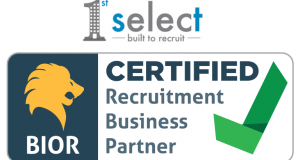 Have the courage to discuss problems you could solve for the company, perhaps ones they might not realise are even an issue
Have the courage to discuss problems you could solve for the company, perhaps ones they might not realise are even an issueWhen being interviewed for a job, remember that the interviewers main goal is to find out your strengths, motivation and fit can help solve their problems. If you can’t convince interviewers you can solve their problems, they won’t hire you. Identifying the interviewers ‘hidden needs’ – the problems they need solving and not necessarily the problems they say they want solved, could be the key to landing you the job.
Acing the three true job interview questions around strengths, motivation and fit generally involves thinking about the question, answering it and then bridging to the answer you want to give. Going one level up to become the ‘must hire candidate’ involves finding out their underlying needs. This requires preparation, courage and the ability to think on your feet.
George Bradt, Forbes contributor highlights these exact 3 key tactics to becoming the ‘must hire’ candidate:
- Preparation
Do your homework. Research the organisation’s culture and context – understand its history, customers, capabilities, collaborators, competitors and social, economic and governmental context. A company’s website is often a goldmine of information and a read up on the behaviours, relationships, attitudes, values and environment that make up its organizational culture will be so valuable when it comes to interview stage. The investment of your time will be worth it for jobs you’re serious about.
- Courage
To get the job of your dreams, you must have the courage to go for it and don’t let anything or anyone stand in your way. Demonstrate to the interviewer how you could solve their known or stated problems. To become the ‘must hire candidate’ takes a great leap of faith, visualisation, courage and risking it all. It won’t work every time. But wouldn’t you rather be first choice sometimes than second choice most times?
- Being able to think on your feet
Thinking on your feet is a strength made up of talent, knowledge and skills. You don’t get to choose your talents. Different people learn differently. Bradt says that some people are analytical or empathetic, some feed off input or relationships. But no matter how you learn, apply that in the moment. Then leverage your problem-solving knowledge and skills to think through what’s going on and what’s going on behind the scenes. This is hard – which is why it’s the ultimate difference between ‘could hires’ and ‘must hires’.
Join Over 40,000 Recruiters. Get our latest articles weekly, all FREE – SEND ME ARTICLES
Recruiters love this COMPLETE set of Accredited Recruitment & HR Training – View Training Brochure








